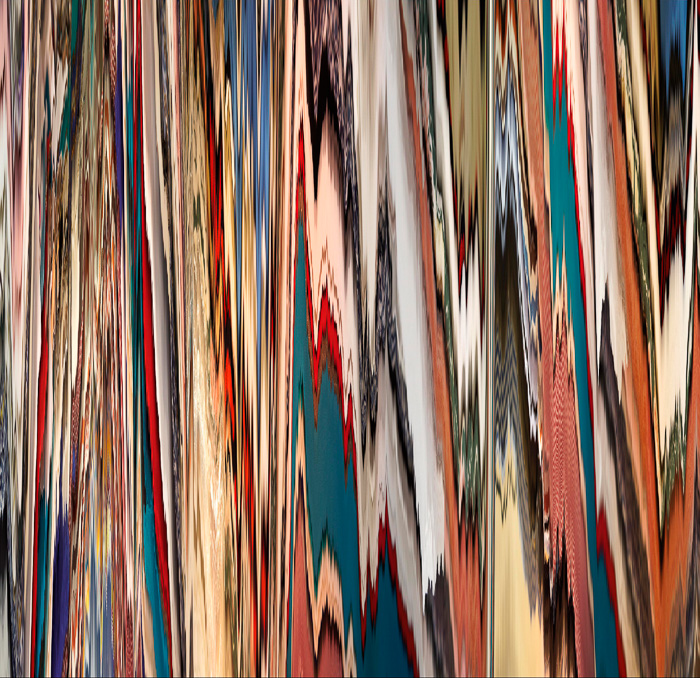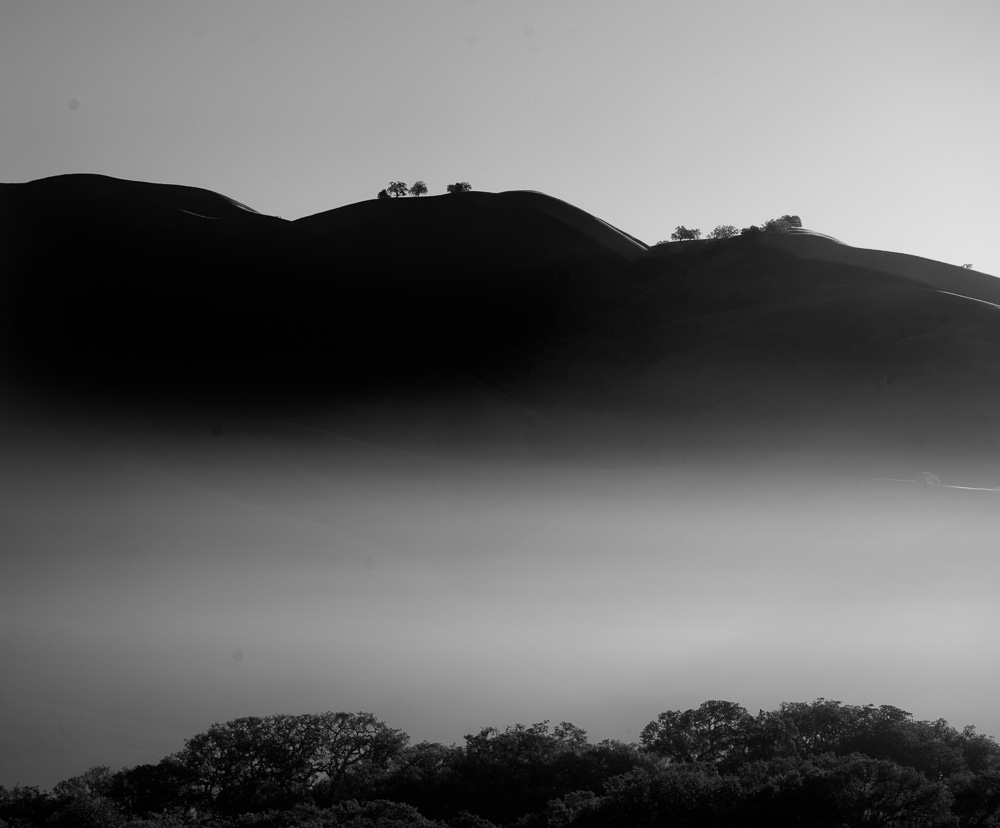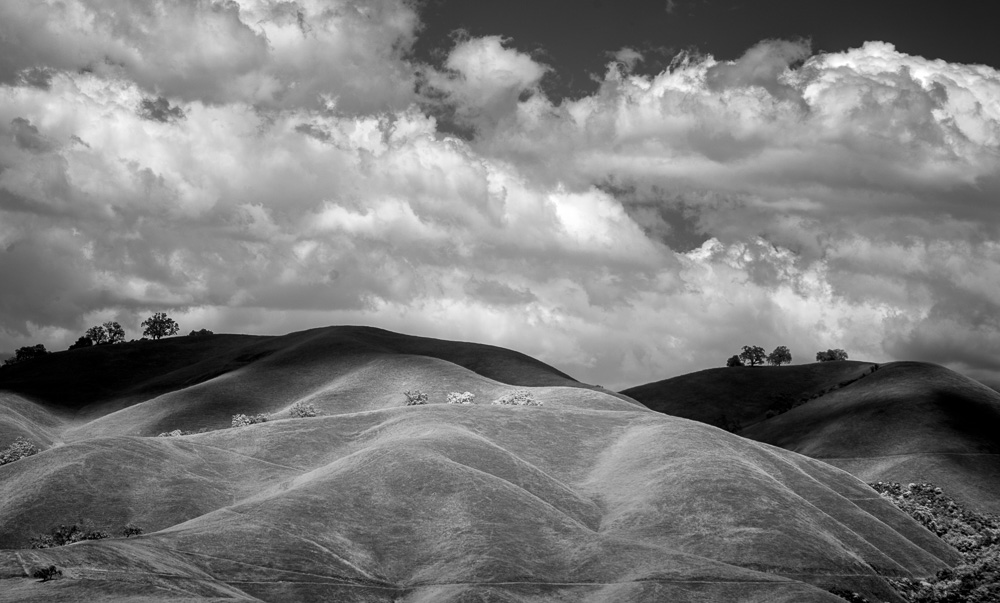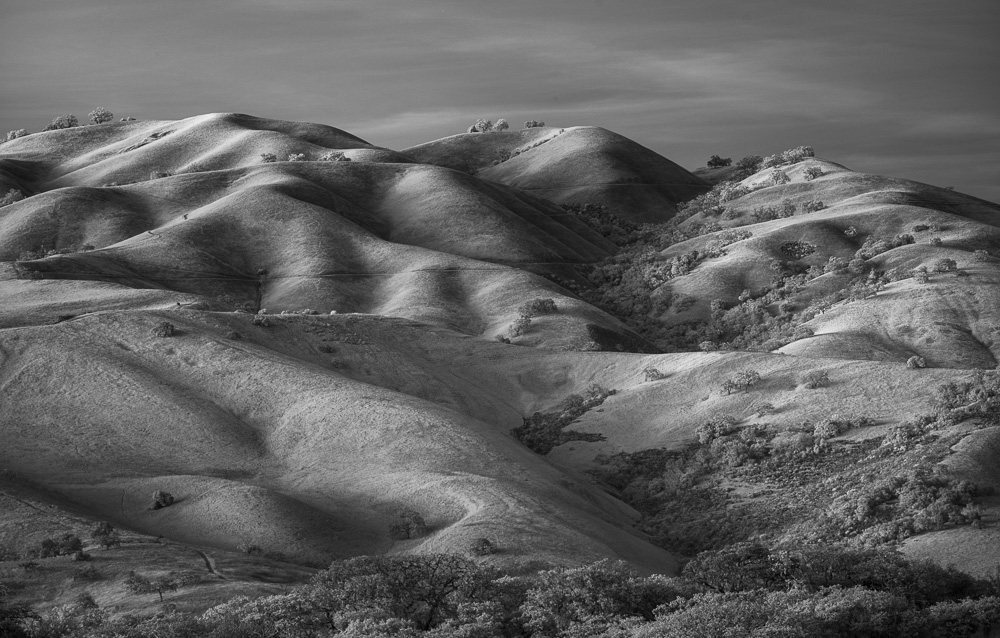This post is self-plagiarized from a couple of earlier posts in this blog, with new material added.
In this blog and elsewhere, I’m always posting images of the same subject matter over and over. I run in spurts. This year, I started out with the stitched infrared trees, moved on to hills across the valley from my house, and am currently bouncing back and forth between that and synthetic slit scans.

I find working in series a very useful method. From the work I see posted in Internet fora, I’m in the minority. In this post, I’d like to tell you why I adopt the constraints I do, and see if my ideas resonate with anybody else. If they don’t, no problem; everybody should make photographs in the way that floats their boat. I’ll respect your work no matter what you do.

I used to do a lot of underwater photography. Whenever I was on a dive boat and the crew asked us where we wanted to go next, the non-photographers tended to opt for someplace new. The photographers wanted to go back to a place we’d already dived.

Ruth Bernhard used to make repeated suggestions that photographers make pictures close to home. She suggested that the rule be “within fifty feet of your bed”, which seemed a little extreme, but sure made the point.

The more time you spend taking pictures somewhere, the better your pictures will be. Whenever I’m someplace that’s new to me, I make the obvious picture. I know I’m doing it, and I do it anyhow. I’ve got to get them out of the way so I can move beyond the superficial. If I were in the stock photo business, they might be good for postcards. I sometimes post them on my Facebook page.

It used to be that I got bored after spending a lot of time in the same spot. I’d keep on photographing, and then I’d start to make good images. Now I seldom get bored, but I sometimes get frustrated that it seems I’ve run out of subject matter. Soon after that happens, I start to find great material all around me. Running out of ways to look at a new subject is just beginning. Once that’s out of the way you can get down to the serious work.
Jeff Bezos, the CEO of Amazon, said in a Business Week interview, “I think frugality drives innovation, just like other constraints do.” Replace “innovation” with “creativity” (I’m not sure I can tell you the difference, but “innovation” is not a word that resonates as well with artists) and “frugality” with darn near any constraint, and you have a truth that has been demonstrated over and over to me. It seems that the tighter the box, the greater the unleashed creativity. The opposite is also true: when I don’t set limits for myself, I get lazy and take the easy way out, which, by no coincidence, is the way of most photographs, and my results are just as mundane as the average ones.
We don’t have to get esoteric to see how limits foster creativity. Ultimately photography is about putting a frame around the world; the boundaries of the photographic image are crucial to the result. That’s why photographers hate it when others crop their work; it’s like someone is messing with the soul of the image. Many photographers almost always use the entire image that’s captured by the camera. When using film, some even prove it in the end result by including the edge of the negative.
Why do people do this? Doesn’t the perfect frame for any subject vary widely with the nature of the subject? Maybe it does, but there is a wonderfully clarifying consequence of constraining yourself to a certain image shape. The easy response is to seek out subjects that do well with that shape, but the real magic happens when you find compositions that work within the shape for subjects that don’t seem like they should naturally fit. The shape of the image, which you decided in advance, forces you into a picture that you wouldn’t have otherwise made. Your own creativity is energized by the challenge of mapping the subject into the predetermined frame, and you come up with an image you wouldn’t have made without the constraint of the frame.
I don’t usually define a series in advance; it usually grows out of some other photographic project or something else that’s going on in my life at the time. Once I’m into the series, it slowly becomes clear to me what the focus of the work is. For my best work, that focus is narrow, which means that there are lots of limits. Dealing with those limits forces me to be inventive.
I’ve tried to be creative off the cuff. It never produces anything beyond pretty pictures. If I go traveling to some new place, I take my camera along. Ever hopeful, I snap away with intent. If I hadn’t long ago dropped any expectations of great pictures from these expeditions, I’d be crestfallen after every trip. I’m so constraint-driven that I can’t look for B&W and color pictures at the same time. Back in the film days I used to wander around with a Hasselblad and two backs, one with color film, and one with B&W. The unfortunate result was that neither my color nor my B&W pictures were very good. Once I get my head wrapped around making color pictures, I can make good color pictures. Once I’m focused in on B&W images, I can make good ones. What I can’t do is switch gears and do well.
So, if you think that what I’m talking about might work for you, take the subject that you’ve been the most excited about in the last few months and start to work it. Find out all the things that don’t fit, and the few things that do. Allow yourself to feel frustration. On the other side of that is insight. Double points If your chosen subject is close to home. Triple points if you make at least one exposure every day.
Good advice, Jim.
Those reading this important post by Jim ought to also look at the DPR thread in the same vein, where Jim elaborates a bit in response to the other comments. Generally good give and take:
http://www.dpreview.com/forums/post/56068702
Thanks, Tex. Here’s one of my posts in that thread.
If you don’t do photography in series, you go out and photograph with a brand new plan every time, or maybe no plan at all. You get better at photography as time goes by because you learn what works and what doesn’t, but the only time you’re thinking about photographing is when you’re capturing or editing images.
Did I get that right? Since I nearly always work in series, I may not understand what it’s like if you don’t. The above is what it feels like to me when I’m not engrossed is a photographic series, as when I’m on a family vacation.
Hold that thought.
When I was working as an electrical engineer, I would occasionally find myself in a tough spot with a design. Engineering is all about dealing with constraints, and sometimes I would find myself seemingly unable to come up with a design that worked the way I wanted it to, as well as I wanted to, consumed as little power as I wanted to, and would cost as little to manufacturer as I wanted it to. When I painted myself into one of those boxes, I usually found my way out. And the way I found my way out came as a fully formed idea, and was usually so inventive that that surprised even me. That’s how you get patents, leapfrog the competition, and make the company – and hopefully you – a pile of money.
And here’s the interesting thing: those breakthrough ideas almost never happened while I was sitting at my desk. I would wake up in the middle of the night with an aha!, and record it with the Dictaphone that I kept by my bedside (I was afraid that I’d forget it, but I never forgot the big ones, and the Dictaphone was just so I could sleep soundly). I’d be taking a shower, or lying in the bathtub drifting, when the solution to the problem that I’ve been struggling with pop into my mind.
What that meant was brain was working on the problem all the time – when I was driving my commute, when I was sleeping, when I was going through all the routine, and not-so-routine tasks that make up your day. Then, when I was sufficiently relaxed, the unconscious part of my brain would deliver the solution to the conscious part.
It seemed too good to be true; there was a part of my brain that would work tirelessly and continuously — and with no conscious effort — to help me out of a jam.
If I hadn’t designed myself into a corner, there were no flashes of insight in the middle of the night. My unconscious assistant left the building. I continued to do solid design work, but the aha moments were fewer and farther between.
Okay, now back to photography.
When I’m working on a series, I get the ideas that move the series along at the same odd moments: I dream them, they pop into my head when I’m relaxed and least expect them. What that tells me is that working in the series, and struggling with the inevitable problems that arise, energizes my subconscious to move the project to the next step even when I’m not thinking about it. Instead of my photography advancing only when I’m explicitly doing it (capturing or editing), my subconscious is working on making my photography better 24/7.
Jim